Key takeaways
- Homemade salsa allows for customization in heat, acidity, and texture, enhancing personal satisfaction in cooking.
- Using fresh, high-quality ingredients, such as ripe tomatoes, onions, and jalapeños, is essential for vibrant flavor.
- Key tools like a sharp knife, sturdy cutting board, and food processor or mortar and pestle influence the texture and ease of salsa making.
- Letting salsa rest after preparation enhances the mingling of flavors, while proper storage in airtight containers prolongs freshness.
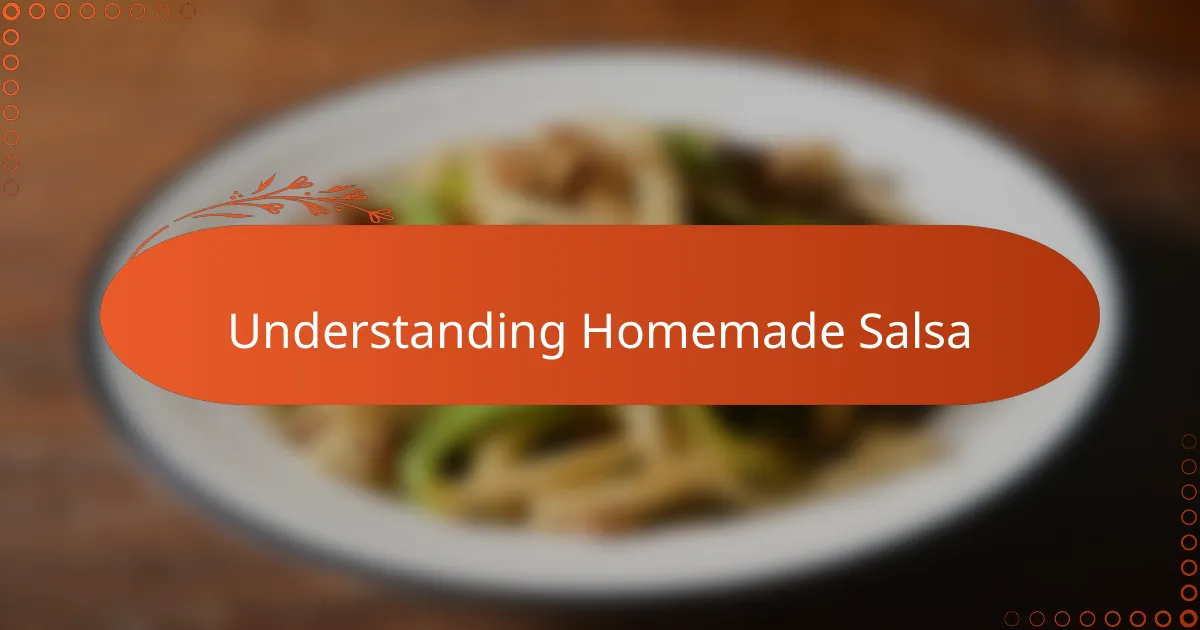
Understanding Homemade Salsa
When I first started making salsa at home, I realized it’s more than just mixing tomatoes and spices—it’s about understanding the balance of flavors. What makes homemade salsa truly special, in my experience, is how fresh ingredients interact differently than store-bought versions. Have you noticed how the natural sweetness of ripe tomatoes can transform a recipe?
One thing I’ve learned is that homemade salsa is incredibly versatile. You can adjust the heat, acidity, and texture to suit your mood or the season, which always makes the cooking process feel personal and rewarding. It’s like painting with flavors—you get to decide whether it’s bold and spicy or mild and tangy.
I often think about how salsa reflects the time and care put into it. When you make it from scratch, you’re not just preparing a dip; you’re crafting something that connects you to your kitchen and ingredients in a way that no jarred salsa ever has. Doesn’t that add an extra layer of satisfaction to each bite?
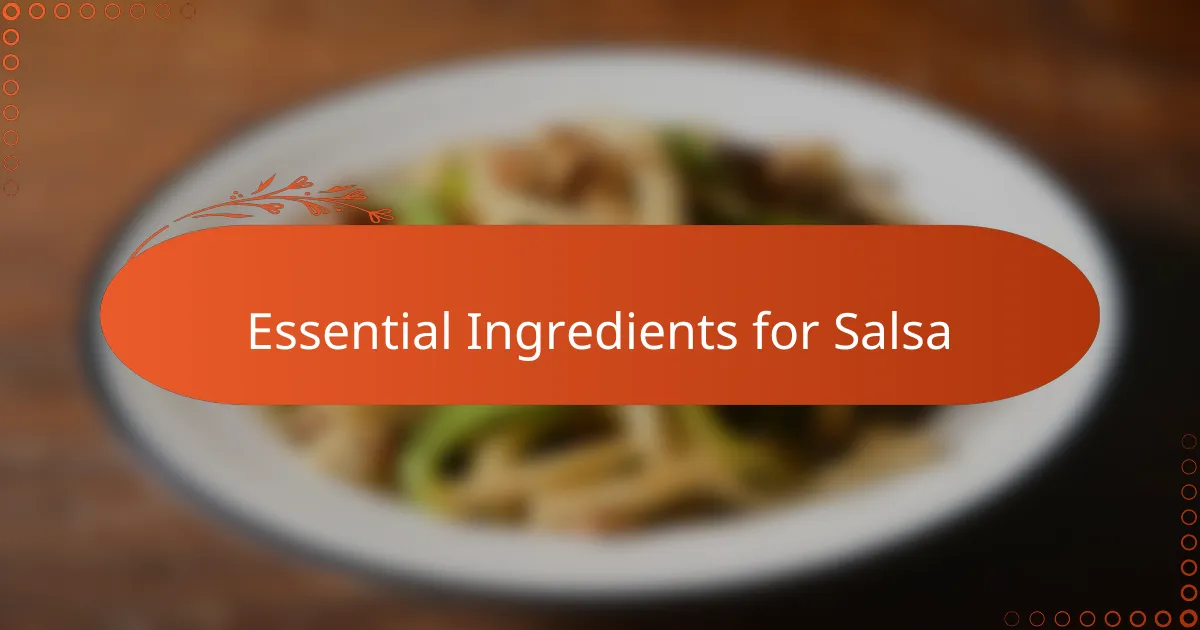
Essential Ingredients for Salsa
Fresh, ripe tomatoes are the heart of any great salsa in my experience. There’s a difference between using just any tomato and one that’s bursting with flavor—when I pick the right ones, the salsa practically sings. Have you ever noticed how the juiciness and natural sweetness of a sun-ripened tomato can brighten up the whole bowl?
Onion and garlic play their classic roles, but it’s the balance that makes or breaks the flavor. I tend to use white onions for their sharpness and just a clove or two of garlic to avoid overpowering the freshness of the other ingredients. It’s funny how these simple staples quietly build the salsa’s backbone without stealing the spotlight.
And of course, I can’t talk about essential salsa ingredients without mentioning something spicy—usually jalapeños for me. I like that you can control the heat level by adjusting the seeds or even swapping for milder peppers, so every batch matches my mood or party vibe perfectly. Don’t you love having that kind of control over your food?
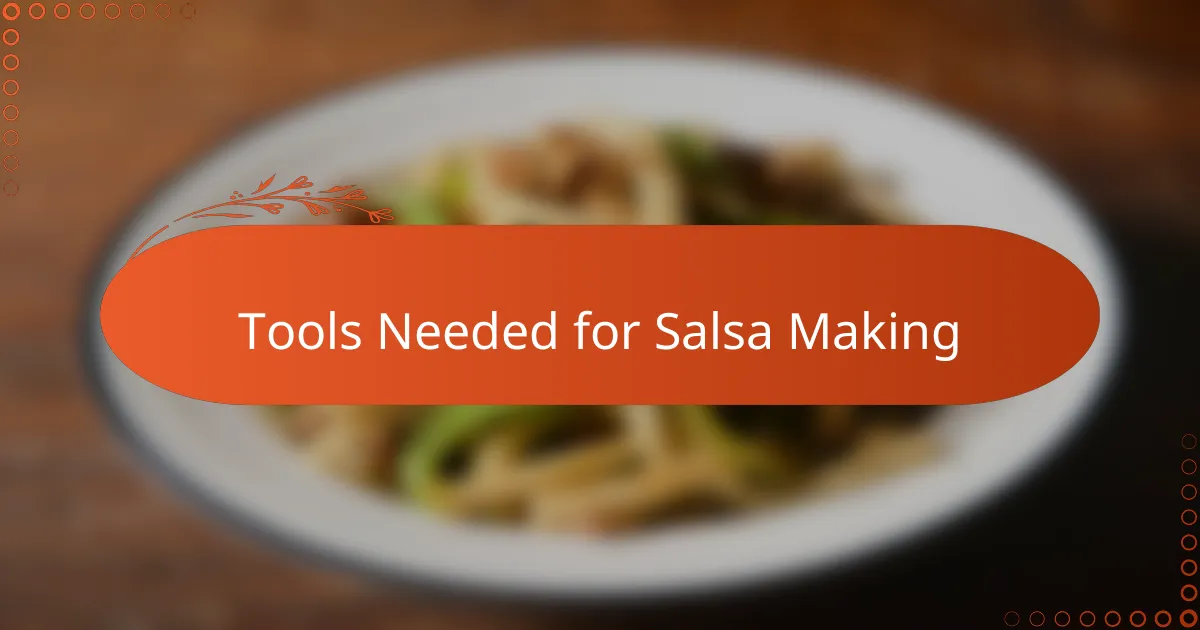
Tools Needed for Salsa Making
When I started making salsa, I quickly learned that having the right tools makes all the difference. A good, sharp knife is my number one tool—I can’t imagine chopping fresh tomatoes and onions without it. Have you ever tried dicing with a dull blade? It’s frustrating and makes the whole process less enjoyable.
Another tool I find indispensable is a sturdy cutting board. I prefer one that’s large enough to hold all my ingredients comfortably. It makes the prep feel organized and smooth, which I think really sets the tone for the whole salsa-making experience.
For blending everything together, a food processor works wonders, especially when I’m in a hurry. But sometimes, I like to use a manual method—like mashing with a mortar and pestle—to get that rustic, chunky texture. Don’t you love how tool choice can influence not just the work, but the character of your finished salsa?
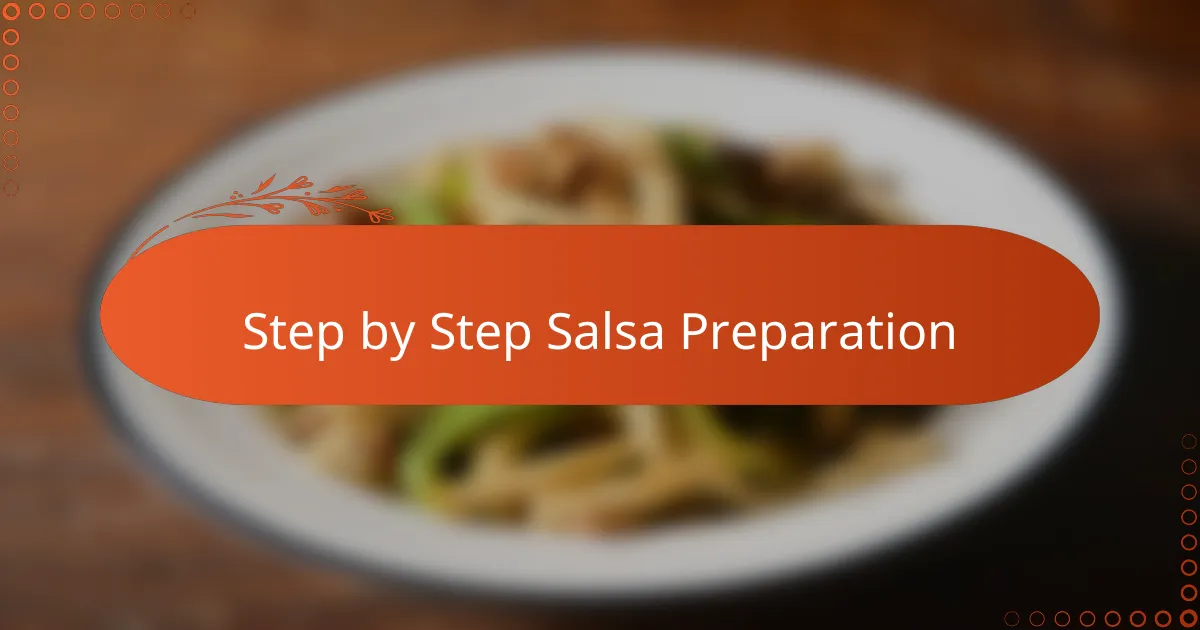
Step by Step Salsa Preparation
The first step in making salsa, I’ve found, is all about prepping the ingredients just right. Chopping the tomatoes, onions, and peppers into uniform pieces helps everything blend evenly, giving your salsa that perfect texture. Have you ever noticed how uneven chunks can throw off the whole experience? I learned this the hard way during my first attempt—it made the salsa feel sloppy rather than crisp.
Once everything is chopped, layering the flavors comes next. I like to mix the tomatoes and onions first, then sprinkle in salt and lime juice to let the brightness really develop. I find letting the salsa rest for a bit works wonders, allowing those simple ingredients to mingle and create a deeper, more cohesive taste. It’s almost like giving your salsa a little time to get to know itself.
Finally, don’t forget the finishing touches—adding chopped cilantro and adjusting heat with extra jalapeños if you want. I always taste my salsa as I go, tweaking as needed until it feels just right. Isn’t it satisfying to know that every spoonful reflects your personal touch and care?
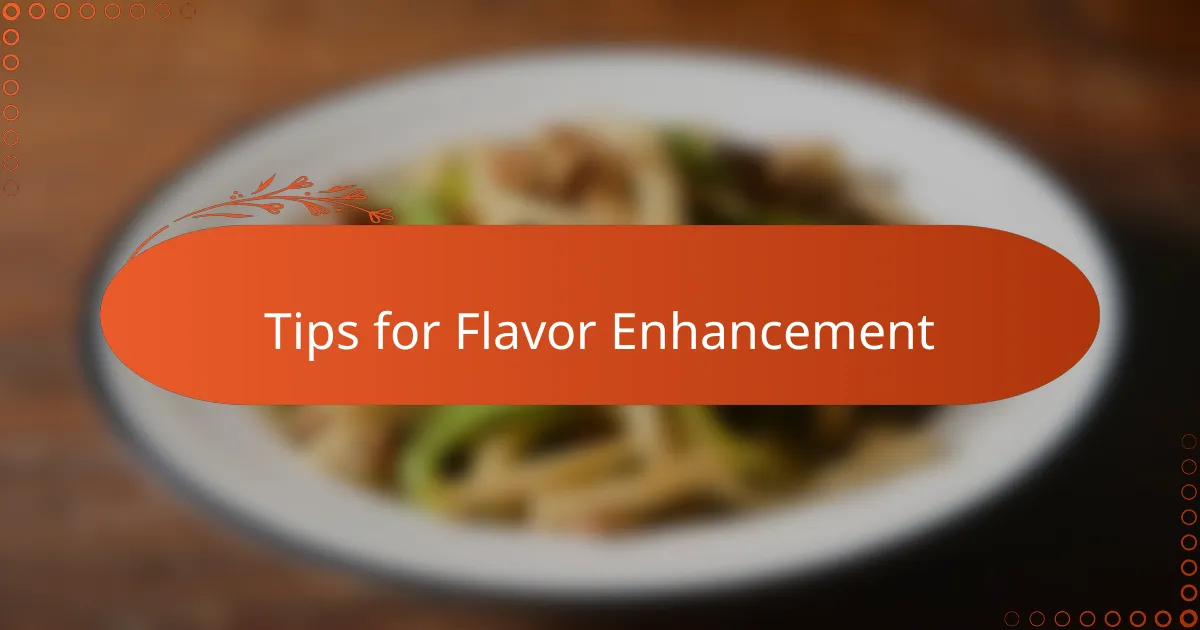
Tips for Flavor Enhancement
One trick I swear by for boosting salsa flavor is to toast the spices lightly before adding them. It’s amazing how a bit of warmth can coax out hidden aromas and deepen the overall taste. Have you ever tried giving cumin or chili powder a quick sauté? It transforms the flavor in a way that feels both simple and magical.
Another tip I’ve embraced is letting the salsa sit in the fridge for at least an hour before serving. This waiting game lets all the ingredients meld together, creating a harmony that’s just not there right after mixing. I used to rush here, but now I always schedule some “flavor resting” time—it’s totally worth it.
Lastly, I often add a pinch of sugar or a splash of vinegar to balance the acidity and round out the flavors. It’s such a tiny adjustment, yet it can completely lift the salsa from good to unforgettable. Have you found that small tweaks like this make your homemade salsa stand out? I’m always experimenting with these little surprises, and they never fail to delight.
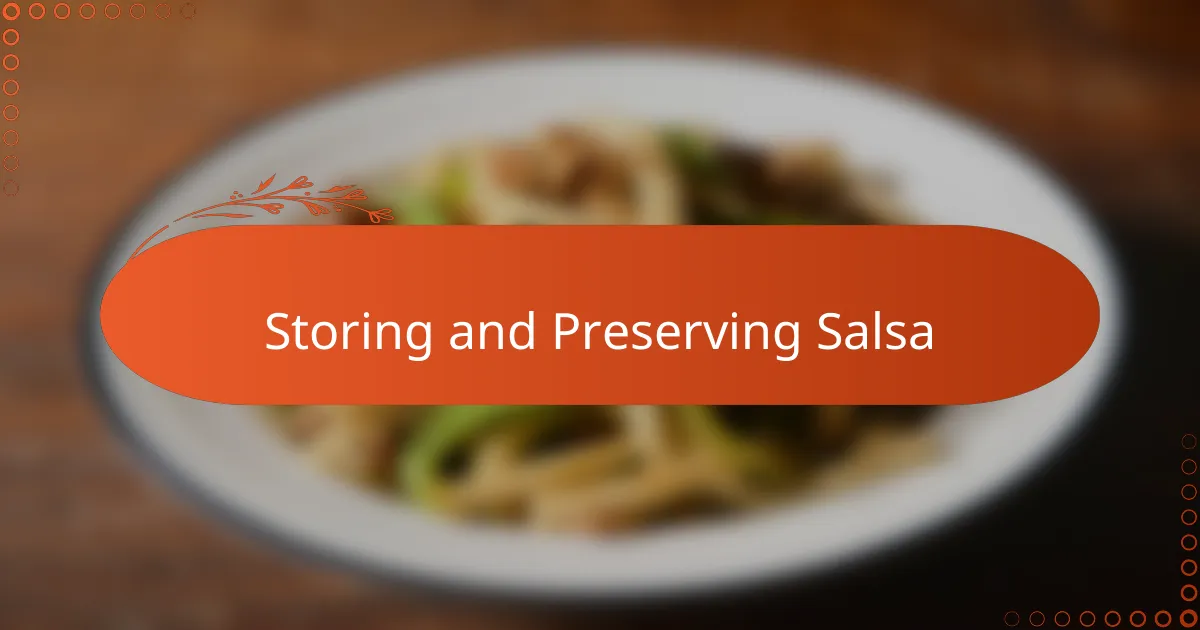
Storing and Preserving Salsa
When it comes to storing homemade salsa, I’ve found that using airtight containers is a game-changer. It keeps the salsa fresh longer and preserves that vibrant flavor I worked hard to create. Have you noticed how quickly salsa loses its punch when left uncovered? I certainly have, and it’s never worth the disappointment.
For me, refrigerating salsa right after making it is essential. It slows down spoilage and keeps the texture just right, especially if I plan to enjoy it within a week. Sometimes I wonder, why risk losing that fresh taste when a simple chill can lock it in? I always opt for the fridge as my salsa’s best friend.
If I want to keep salsa even longer, I turn to freezing. I know it changes the texture a bit, but for preserving those bold flavors, it’s absolutely worth it. Have you tried freezing salsa before? I did once out of curiosity, and though it was a little softer when thawed, the taste was almost as bright as fresh. It’s a handy trick for making salsa in bulk without waste.
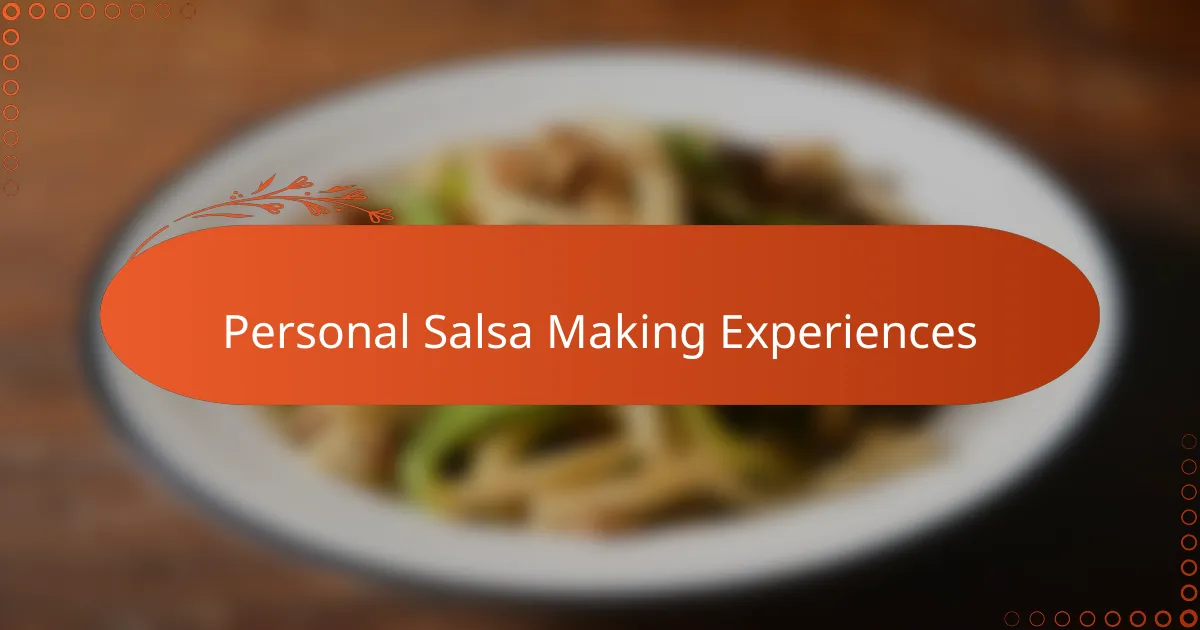
Personal Salsa Making Experiences
One of my earliest memories of making salsa at home involves a batch that was a bit too spicy—my enthusiasm for jalapeños got the best of me. Tasting that fiery salsa made me realize just how personal this process is; every decision, from the pepper heat to the lime squeeze, shapes the final product uniquely. Have you ever had a moment like that where your salsa surprised you, for better or worse?
Another experience that stands out is the satisfaction I felt the first time friends complimented my homemade salsa. It was more than just praise; it was validation that the time spent chopping, tasting, and adjusting was worth it. I cherish those moments because they remind me that salsa making is more than a recipe—it’s a way to share a bit of myself through food.
I also must admit, sometimes salsa making feels like an adventure in trial and error. I’ve mixed batches that were too watery or lacked that bright punch I crave. But each attempt taught me something new, whether it was choosing better tomatoes or letting the flavors meld longer. Isn’t it wonderful how cooking can be both a science and an art, shaped by patience and a bit of experimentation?



